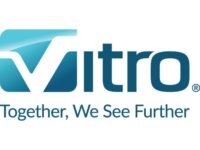Rooftop Solar is a Clear Winner for Specialty Glass Manufacturer

Spearheading its transition to a sustainable and more energy-independent future, specialty glassware manufacturer, Astraglass Innovations (formerly Andrews Glass), has installed a 203.3kW solar system on the roof of its production facility in Vineland, New Jersey. The 484-module system is expected to generate over 266,000kW/h of clean electricity in year one, offsetting approximately 40% of the facility's energy consumption and reducing annual CO2 emissions by around 116 tons.
In addition, by taking advantage of New Jersey’s Successor Solar Incentive (SuSI) Program, Astraglass is qualified to receive $100 per MWh of energy produced by the system for the next 15 years, effectively creating a new revenue stream for the business.
“The future is looking even brighter for Astraglass following its decision to invest in making its business more sustainable,” says Kyle Shroufe, Co-Founder of Opal Energy Group, which designed, installed and will maintain the solar system. ”Manufacturing glass products requires a significant amount of electric consumption on site and solar power is one of the only levers to truly offset that consumption while simultaneously creating a new revenue source for the business. Combined with tax credits and bonus depreciation, Astraglass is forecast to achieve a ROI in just three years.”
Astraglass specializes in producing scientific and laboratory glassware, precision glass and glass to metal components for OEM applications.
To meet the company’s demand for high energy production, Opal Energy opted to install bifacial modules upgraded to smart modules with SolarEdge Power Optimizers. Bifacial modules increase energy yield by producing power from both sides of the module. However, their performance can be impaired due to shading on the underside of the array caused by the roof. Power Optimizers help overcome this challenge by allowing modules to operate independently from others on the same string. This means that in the event that one or more modules are shaded leading to loss of production, connected modules will not be impaired. This is an important advantage compared to other string inverter solutions in which energy generation of connected modules is reduced to that of the lowest performing unit.
Power Optimizers also offer the ability to monitor the performance of each module individually in real time, helping to maximize system uptime and streamline maintenance. Another important benefit is the system’s suite of inbuilt safety features, such as arc fault detection and SafeDCTM which is designed to reduce voltages to touch-safe levels during grid shutdown and emergencies. These features not only meet but exceed NEC safety standards. Additionally, they meet FM Global’s DS 1-15 engineering requirements for added financial security.
Opal Energy’s decision to use SolarEdge technology helped Astraglass to secure 100% funding for the solar project, making its decision to invest in solar even easier. This was supplied by Sunstone Credit, which specializes in helping small-to-medium sized companies to finance the installation of solar energy projects.
”Our foremost objective is to make quality investments that ultimately help businesses access the financial and environmental benefits of solar,” says Sunstone Credit Co-founder Duncan Hinkle. “Our loans can have terms up to 20 years, and so we put a lot of thought into evaluating the partners and technology we work with. The advanced features in this installation give us the confidence that our investment, and that of our customer, is in safe hands.”Looking for a reprint of this article?
From high-res PDFs to custom plaques, order your copy today!





